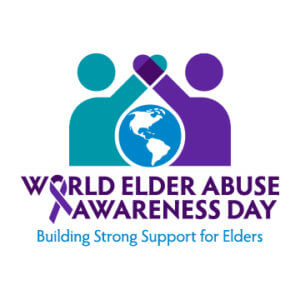Recently, the federal government has been working to determine how many senior citizens nationwide are victims of abuse, neglect or exploitation. The federal Administration for Community Living estimated that 1.5 million cases were reported to adult protective agencies across the country in 2016. About half of those reports led to further investigation. Additional research also indicates “that only one out of 24 cases of elder abuse or neglect is ever reported to authorities.” (Singer, 2018) The numbers are cause for alarm. Springwell’s mission includes preventing and stopping elder abuse. Abuse may include physical abuse, sexual abuse or abusive sexual contact, emotional or psychological abuse, financial abuse or exploitation, neglect by a caregiver or other responsible person, and self-neglect.
As reported by
WGBH in May, new national data shows a crisis of elder abuse: “In Massachusetts, the Executive Office of Elder Affairs reported 9,800 confirmed abuse and neglect cases in the state in 2017, a nearly 40 percent increase over 2015.” With Americans living longer — and living longer in their own homes — the opportunities for abuse are also expanding, said Alice Bonner, the Massachusetts Secretary of Elder Affairs. Bonner noted that “the fastest growing type or subtype of maltreatment or abuse is actually financial exploitation.” She also emphasized that “one of the biggest categories of elder abuse is self-neglect — a senior who has simply become unable to properly care for oneself and winds up injured or in financial ruin.” (Singer, 2018)
There are many causes of self-neglect that may include a combination of psychological, social, and economic factors, along with mental and physical conditions.n The National Center on Elder Abuse (NCEA) notes that self-neglect can include behaviors such as: hoarding, failure to provide adequate food or nutrition for oneself, failure to take essential medications or refusal to seek medical treatment for serious illness, poor hygiene, confusion, not wearing weathern suitable clothing, dehydration, and inability to attend to housekeeping. (National Center on Elder Abuse, 2018)
Self-neglect cases can be very complex and require careful evaluation by trained professionals. Individuals have the right of self-determination in how they care for themselves. In self-neglect cases, professionals begin by evaluating whether the person has the capacity to clearly make decisions about his or her behaviors and living conditions.
In some cases, self-neglect can lead to severe financial hardship for an elder, but in some cases of financial hardship, the cause is actually financial abuse by a caregiver. Financial abuse or exploitation by definition can cause substantial monetary or property loss to the elder, or substantial monetary or property gain to the perpetrator. The NCEA notes these possible signs of financial abuse: changes in the older adult’s appearance, health status,n or personal habits, changes in long time banking or spending patterns, or a confused person may sign something without understanding consequences.n Other indicators outlined by the NCEA are: unexplained changes in wills or title documents, increased telephone solicitations for funds, missing personal property, funds wired out of country for mysterious reasons, missing or redirected mail, missing personal property, or names added to older adults bank accounts. (National Center on Elder Abuse, 2018)
Financial abuse and self-neglect are just two subtypes of elder abuse. Elder Abuse Awareness Day is a chance to learn more about signs and symptoms of elder abuse. Those who specialize in elder abuse can be a valuable resource to help anyone concerned about an elder. The elder’s safety and well-being is the top priority and professionals can help us to know when and what type of interventions might be needed. Contact our
Information and Consultation Department if you have questions or concerns. For more information about elder abuse, review information on our website
here.
Bibliography
Other Sources



